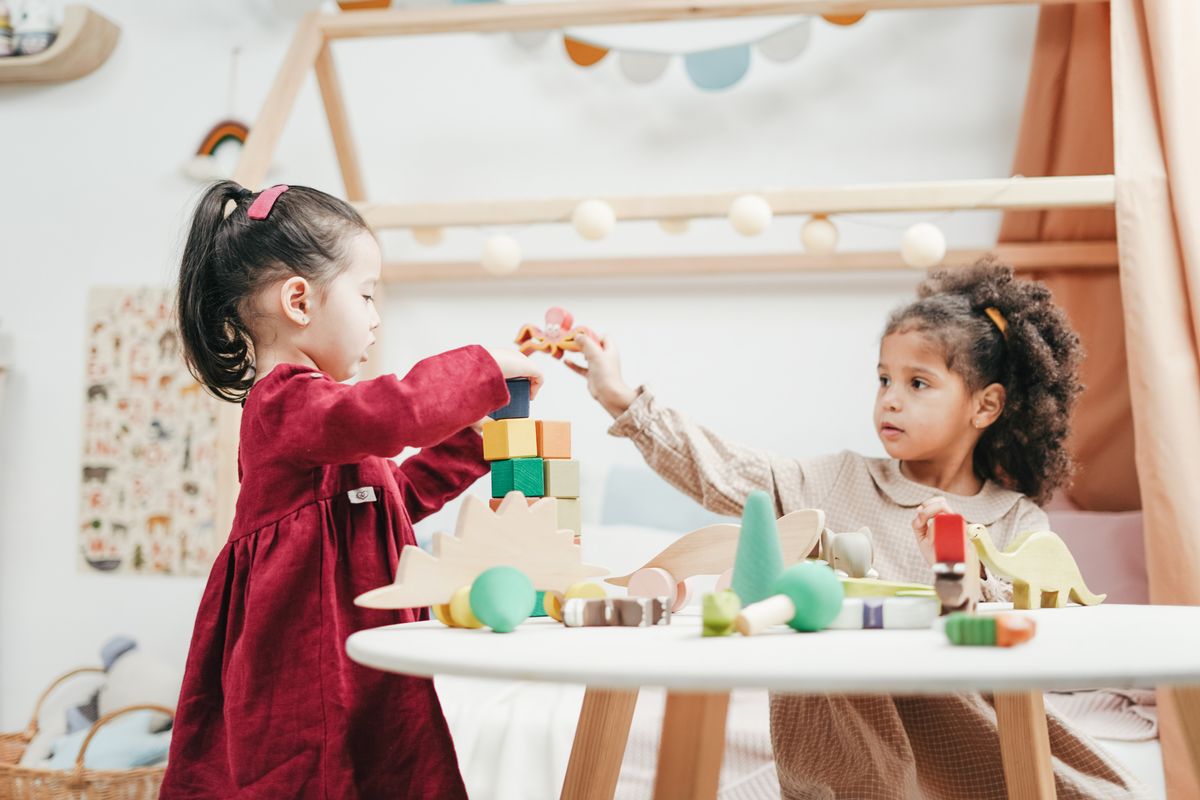Discover Edomey's daycare, school, and Montessori cleaning services. To reduce the spread of disease, environmental sanitation aims to minimize the presence of pathogens on surfaces within educational and childcare settings. Edomey is a professional cleaning company offering a variety of daily and weekly cleaning and janitorial services including healthcare and childcare facilities.

A Guide To Clean Childcare Facilities
Daily Daycare, School & Montessori Cleaning Services
To achieve the highest level of cleanliness, it's essential to utilize warm water and detergent, adhering strictly to the dosage instructions provided by the manufacturer. Eliminate harmful germs by vigorously scrubbing surfaces. Follow up with a thorough rinse using clean water. Make sure to allow for complete drying before moving on to the next step.
Cleaning Equipment for Daycare, School & Montessori Cleaning Services
To ensure thorough cleaning, opt for washable materials such as disposable or machine-washable cloths, along with vacuum cleaners equipped with HEPA filters. Proper storage and upkeep of cleaning gear are paramount. For efficient organization, employ color-coded towels or sponges designated for specific areas. Shield your hands with rubber gloves, airing them out after use, and washing them thoroughly once removed. Utilize germ-fighting cleaning agents, ensuring they remain in contact with surfaces for the necessary duration to be effective. For top-tier daycare, school, and Montessori cleaning services, reach out to Edomey today!
Daycare, School & Montessori Cleaning Services by Edomey
In the realm of childcare facilities, maintaining impeccable cleanliness is paramount. Parents entrust educational institutions with the well-being of their children, emphasizing the critical need for pristine environments. Recognizing this imperative, our professional daycare, school, and Montessori cleaning services are tailored to elevate cleanliness standards beyond expectations.
Educational settings, whether daycare centers, schools, or Montessori environments, harbor diverse activities and interactions daily. As such, these spaces necessitate tailored cleaning solutions that cater to their unique requirements. Our daycare, school, and Montessori cleaning services are meticulously crafted to address every facet of educational environments, ensuring cleanliness across classrooms, play areas, common spaces, and sanitary facilities.
In today's world, health and safety regulations are more stringent than ever, especially within educational institutions. Our professional cleaners in Edmonton and Vancouver is well-versed in industry standards and guidelines, meticulously adhering to health and safety protocols. From sanitizing high-touch surfaces to implementing eco-friendly cleaning practices, we prioritize the well-being of children, staff, and visitors alike.
The Benefits of Professional Daycare, School & Montessori Cleaning Services
Cleanliness directly impacts the learning environment, influencing concentration, productivity, and overall well-being. Our comprehensive daycare, school, and Montessori cleaning services ensure that educational spaces remain conducive to learning, fostering an atmosphere where students can thrive academically and socially.
Minimized Health Risks
Daycare centers, schools, and Montessori facilities are breeding grounds for germs and bacteria. Without proper cleaning and sanitation measures, these environments pose significant health risks to children and staff. By enlisting our professional cleaning services, educational institutions mitigate the spread of illnesses, safeguarding the health of all occupants.
Time and Cost Efficiency
In-house cleaning operations within educational institutions often prove inefficient and costly. From sourcing cleaning supplies to training staff, the logistical challenges can be overwhelming. Our daycare, school, and Montessori cleaning services offer a cost-effective solution, eliminating the need for internal cleaning teams while ensuring superior cleanliness standards.
Why Choose Us for Daycare, School & Montessori Cleaning Services
With years of experience in the cleaning industry, our professional cleaners in Edmonton possesses the expertise and insight necessary to deliver exceptional results. From deep cleaning to routine maintenance, we approach every project with precision and professionalism, exceeding client expectations at every turn.
We understand that every educational institution is unique, with its own set of challenges and requirements. Our daycare, school, and Montessori cleaning services are fully customizable, allowing us to adapt our approach to meet the specific needs of each client. Whether it's scheduling cleaning sessions outside of operational hours or targeting high-traffic areas, we tailor our services to ensure maximum efficacy.
At the core of our operations lies a steadfast commitment to excellence. Our professional cleaners in Edmonton take immense pride in delivering unparalleled service, striving for perfection in every aspect of our work. From the moment you engage our services to the completion of each cleaning task, you can expect nothing short of excellence.
Elevate Cleanliness Standards with daycare, school, and Montessori cleaning services
In the dynamic landscape of daycare, school, and Montessori environments, cleanliness reigns supreme. Our daycare, school, and Montessori cleaning servicesare designed to elevate cleanliness standards, ensuring that educational spaces remain pristine, safe, and conducive to learning. By partnering with us, educational institutions can embark on a journey towards enhanced cleanliness, efficiency, and peace of mind.
Call us today at Edomey - a professional cleaning company in Edmonton offering daycare, school, and Montessori cleaning services in Edmonton, Vancouver, and other cities across Canada. We will walk you through your property to get a quote. Call now 604-523-8943. We have offices in many cities in Canada: Vancouver, Abbotsford, Richmond, Calgary, Kitchener, Guelph, Winnipeg, Halifax, Quebec, etc.
Cleaning Services for Schools in Edmonton
Professional Office Cleaning Services in Coquitlam
Professional Cleaning Services for Medical Facilities in Burnaby
